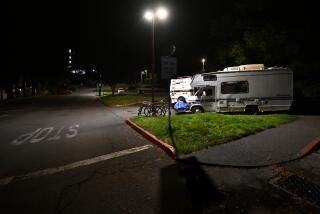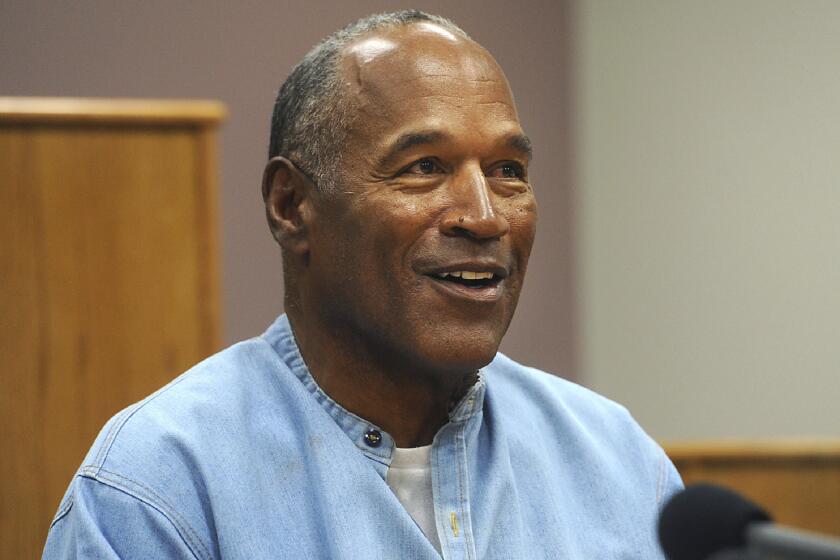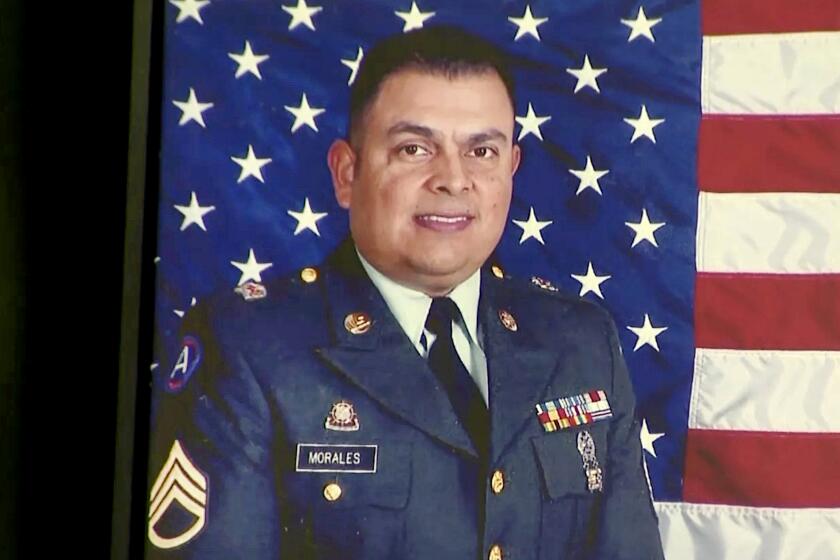Column: After her life in L.A. unraveled, a woman living in her car hopes to regain health and employment
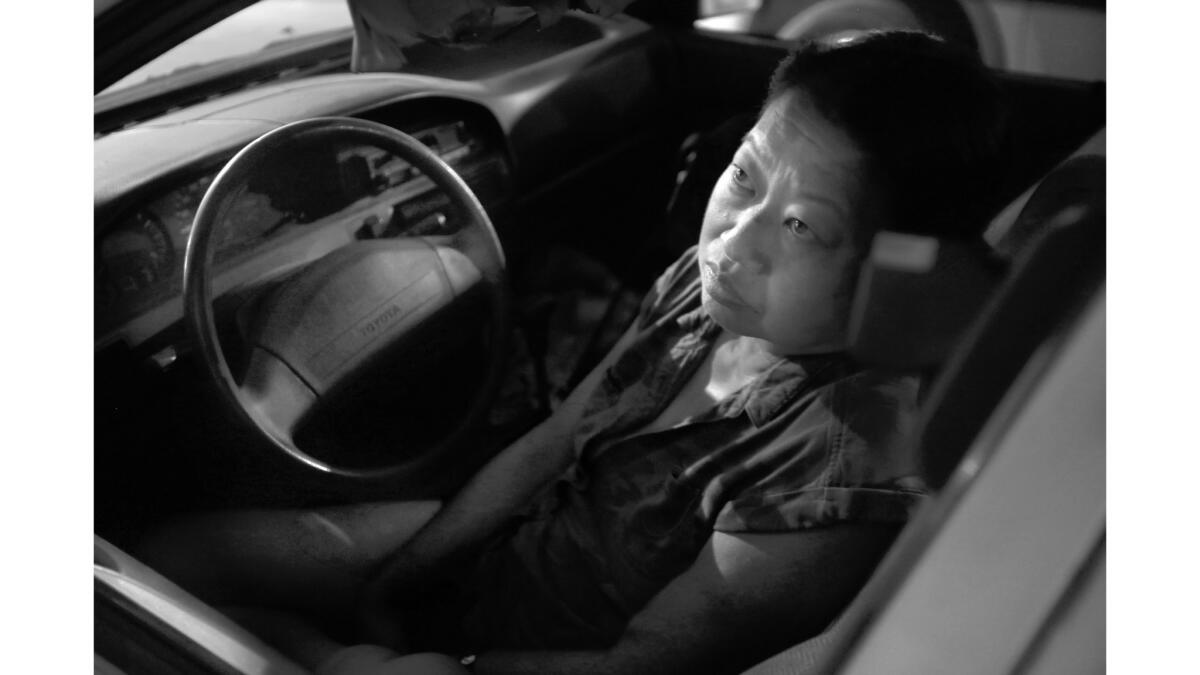
She’s a Los Angeles native, the daughter of Japanese immigrants, and at one time she was the definition of middle class.
College education. Good job. Nice apartment in the Cheviot Hills area.
Losing those things did not happen overnight. There’s a story here, an unraveling, a long process of decline. Often, for the tens of thousands of people who live on the margins in one of the most expensive regions of the world, a bad break is the beginning of a steep drop.
Meg Shimatsu, 54, was diagnosed with diabetes almost 20 years ago, but the bigger blow came nearly a decade ago. That’s when doctors told her that her kidneys were giving out.
Her disease advanced in the wake of the economic recession, and work as a legal secretary was harder to come by. In 2012, Shimatsu began dialysis treatment that often left her fatigued. On her medical disability income, she could no longer afford her apartment, so she moved in with a sick, elderly friend in Eagle Rock, and helped keep his house in order.
That was a good deal until December, when the friend died and the landlord raised the rent.
Shimatsu got financial help from a brother living overseas and a niece in Colorado. In January, she checked into a low-rent motel on an interim basis, but couldn’t find an affordable apartment. Between her car insurance, gas, food costs, phone service and mounting credit card bills, she was soon practically broke. She moved in with a boyfriend in Carson briefly, but that didn’t work out.
By spring, she was living in her car, a 1990 Corolla with 275,000 miles on it.
We met for the first time on June 8, after several email exchanges, at a coffee shop in Eagle Rock. Shimatsu is thin and dark haired, her skin pale. She crossed her arms against the air-conditioned chill, a white bandage over the spot where needles pierce her skin during dialysis treatment. She said she’s on a waiting list to get into a women’s shelter, but was told that could take forever.
“I have good days and bad days,” she said. “Some days I’m totally exhausted.”
Shimatsu is on a waiting list for a kidney transplant, but knows the process often takes many years. Luckily, Medicare and Medi-Cal pay the vast majority of her medical bills, but she worries about a possible Medi-Cal cut given the national healthcare reform conversation.

At first, she seemed reluctant to discuss her situation in detail. She measured my questions, met them with pauses, then offered clipped replies.
“I’ve always been a self-sufficient person, and this is kind of a shock to me,” she said.
It’s easy to play the game of maybes.
Maybe she should have planned years ago for something going wrong, but she was never really flush.
Maybe she should have spent donations from family members more strategically, “But I sort of panicked,” said Shimatsu, who hadn’t planned to be in a motel very long.
Maybe she should abandon Los Angeles for a place with cheaper housing, as her brother has encouraged her to do. But the thought of moving to an unfamiliar place in or out of California, and living in further isolation while chronically ill, is scary. And it still wouldn’t be cheap.
In Los Angeles County, the average monthly rental of $2,300 is about $1,000 more than Shimatsu’s disability check. The average rental in the Inland Empire would take her entire check. In California’s Central Valley, which has some of the lowest rents in the state, the average rental of just under $1,000 would swallow roughly 80% of Shimatsu’s income.
“To be honest with you, I have not always made the best decisions financially,” she said. “But that’s in the past now.”
So what’s her plan?
In the best-case scenario, she’ll get a transplant, regain her health, go back to work and try to climb back into the middle class. While waiting for that to happen, maybe she can get part-time work and find a small place, or divide the cost of a bigger unit with roommates.
Until then she’s got the 27-year-old Toyota.
There’s something seriously out of whack, I told her, when someone as sick as she is has to live in a car. Shimatsu mentioned a recent column of mine about a homeless woman who was reunited with her family, through the work of Pacific Palisades residents, and returned home to Scandinavia.
“They’ve got a better safety net there,” said Shimatsu.
But despite her predicament, she said the situation could be much worse.
“In the beginning I had a really tough time falling asleep in the car, but I eventually got used to it and now I can sleep for eight hours,” Shimatsu said.
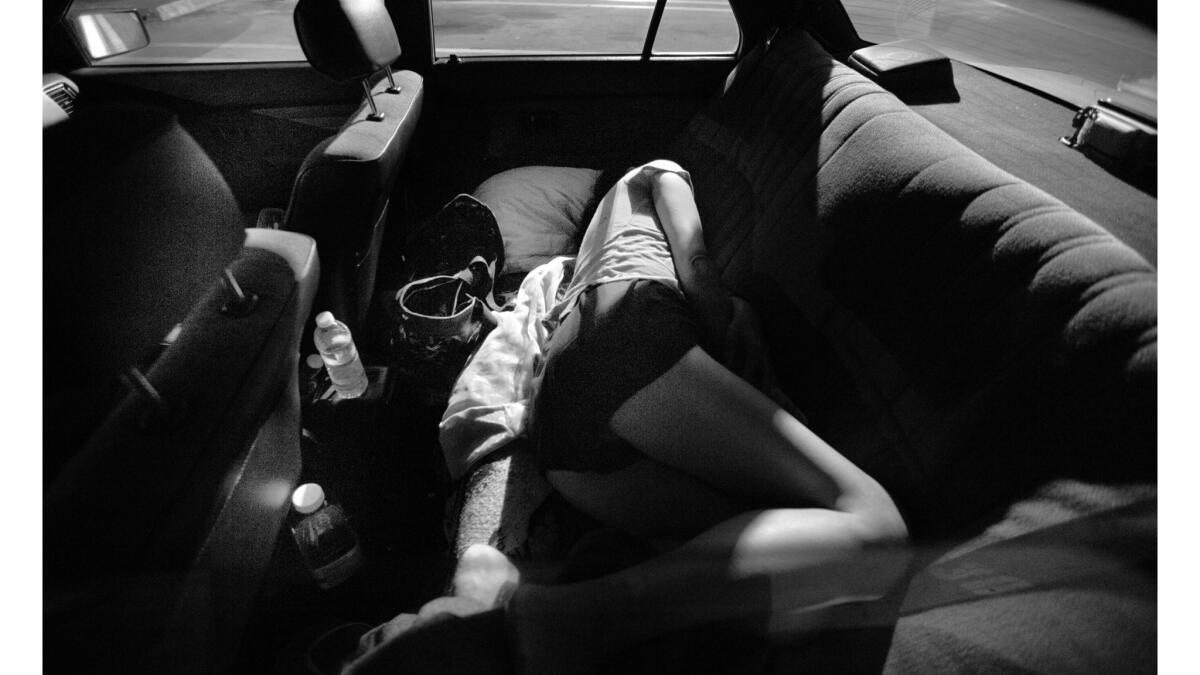
She got a gym membership so she has a place to shower and kill a few hours indoors, and in her travels, she sees the roving armies of street dwellers.
“I consider myself luckier than most homeless people,” said Shimatsu.
Shimatsu often visits the Women’s Room in Pasadena, a daytime refuge where she and other homeless women — some of whom suffer with mental illness or have been victims of domestic abuse — can relax, nap, get something to eat, and feel just a little bit less alone. In the midst of so many tragic tales, the miracle of the Women’s Room is the sense of community and hope it provides, with a dedicated staff that includes lots of volunteers, including students.
On a visit with Shimatsu on Thursday, I met Brenda, who said she just got a room after years of living primarily on Gold Line trains, and Ruby, whose apartment building remodel forced her out of a $750 monthly unit. “I can’t find anything at that price,” said Ruby. “Nothing, nothing, nothing.”
The nonprofit’s director, Rabbi Joshua Levine Grater, talked about the daily parade of those who, in a state that stands as a world economic powerhouse, are suffering through a worsening shortage of affordable housing.
“It’s not right,” said the rabbi, who runs a rental assistance program to prevent more homelessness, along with a food pantry with equal numbers of Latino, African American, Asian and Caucasian clients. “It’s not right.”
And yet the resilience of the clients — their very will to survive — is an inspiration to the rabbi and his staff.
When she heads back to the hospital, Shimatsu parks near the elevator for the night, so she can pop inside to use the restroom or hang out in the lobby. When her day is done, she folds herself into the back seat of the car and pulls up a blanket. She sets her alarm for 4 a.m. and is only steps from her morning dialysis treatment.
Shimatsu, an English major at Cal State Northridge, watches a bit of TV and does a lot of reading before retiring. She reads the newspaper and likes books that can help her focus and keep a positive outlook.
“If you’re not in a great situation,” she said, “you want to believe there’s light at the end of the tunnel.”
Get more of Steve Lopez’s work and follow him on Twitter @LATstevelopez
ALSO
The mystery homeless woman of Pacific Palisades and the village that helped her home
Protesting a coffee house over gentrification fears is silly — and misses the point of L.A.
People keep leaping to their deaths from iconic Pasadena bridge. How do we stop them?
More to Read
Start your day right
Sign up for Essential California for news, features and recommendations from the L.A. Times and beyond in your inbox six days a week.
You may occasionally receive promotional content from the Los Angeles Times.

